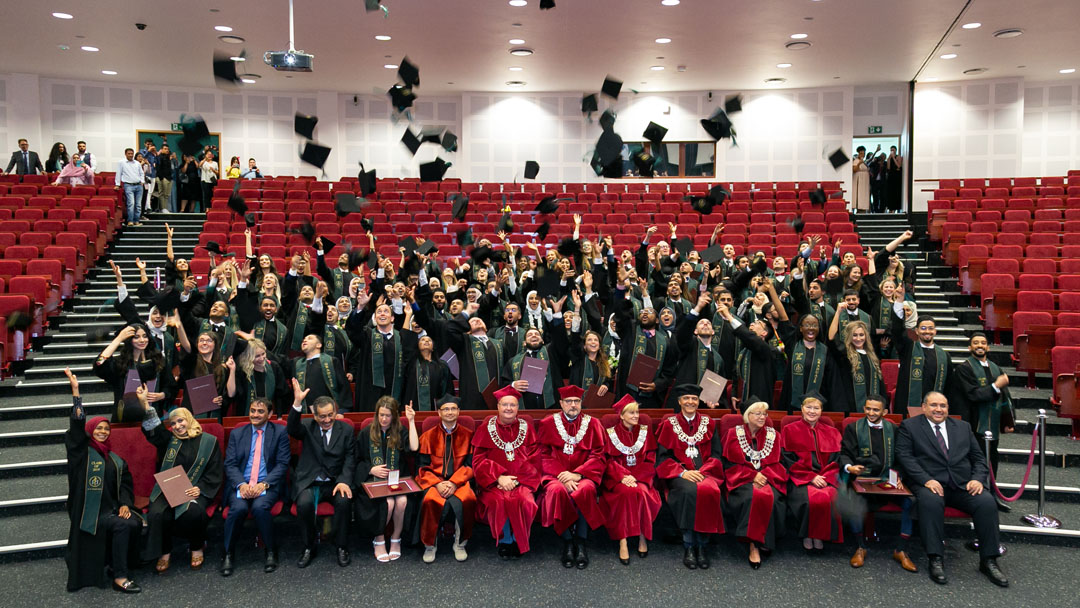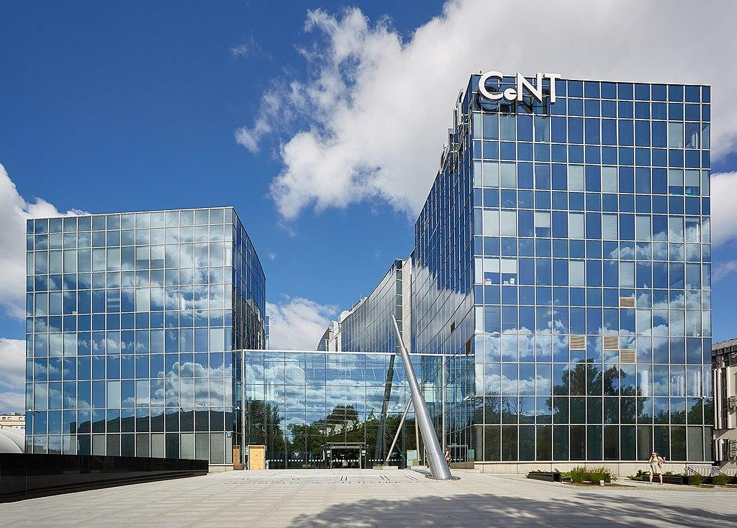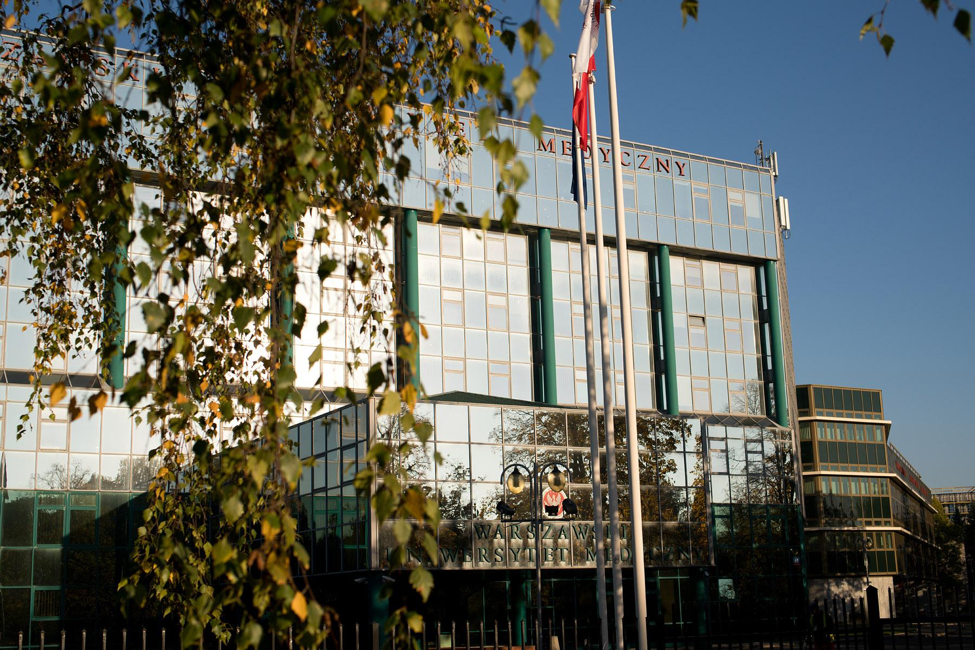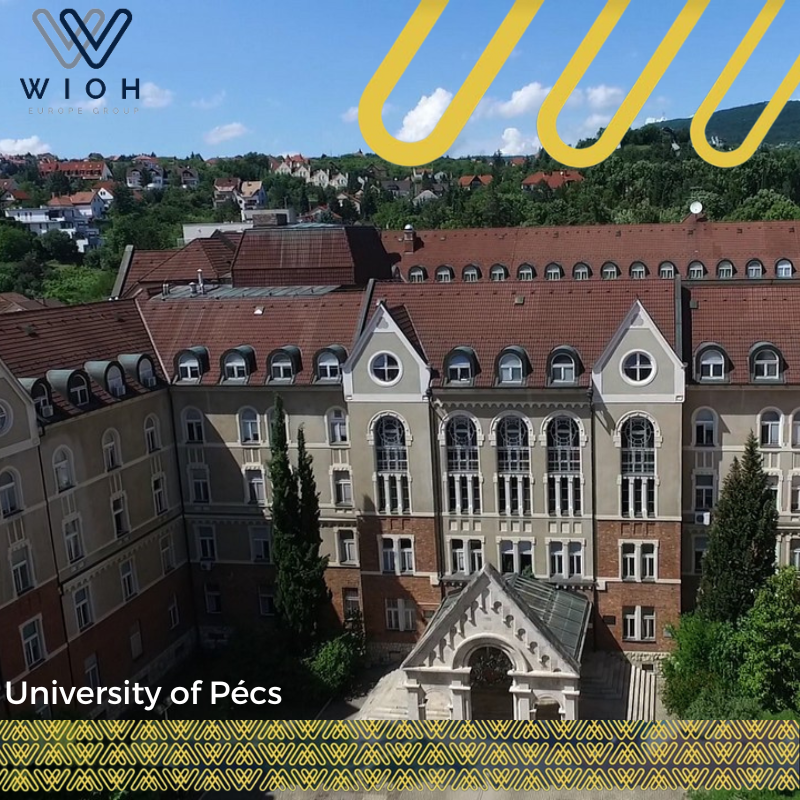Medical University of Warsaw is the best medical university in Poland. WUM is a modern academic institution and a dynamic research center specializing in clinical studies and medicine.
University Ranking:
According to US News, it ranked 1113 for the year 2020
According to THE World ranked 801 for 2020
According to SJR ranked 423 for 2021
University history:
One of the largest medical universities in Poland and a flourishing research center with a history dating back to two hundred years of history, owes its indisputable leadership position on the educational map of Poland, on the one hand, to its devotion to the best traditions of the university, and on the other hand, to its dynamic development.
The university’s roots go back to 1809, when the Medical Academy was established on the initiative of physicians – August Wolff, Hiacynt Dziarkowski, Józef Czekierski and Franciszek Brandt – and resident pharmacy Józef Celiński.

In 1816, the Medical Academy was merged into the University of Warsaw as the Faculty of Medicine. The university operated until October 1831.
Academic teaching of medicine was interrupted in Warsaw for 26 years, but the outbreak of epidemics and the lack of a suitable number of doctors led to a decision to establish a medical university.
In 1857, the Medical-Surgical Academy was created, continuing the tradition of the Medical Faculty of the Royal University of Warsaw, and then in 1862 the academy was incorporated into the Warsaw School of Economics as the Faculty of Medicine.
In 1950 the Medical Academy was established, comprising the College of Medicine with the Department of Dentistry and the College of Pharmacy. In March 1950, the institution’s name was changed to Warsaw Medical University.
Recent years are marked by the dynamic development of the Medical University of Warsaw (MUW), which is now the largest medical school in Poland. On May 29, 2000, the Senate decided to form a new college, the College of Health Sciences with three departments – Nursing, Midwifery, and Nutrition. In 2002 the Faculty of Graduate Studies was established.
In 2008, the Medical University of Warsaw became the Medical University of Warsaw. The name change was a confirmation of the facts – the actual position and rank of scientists. 2009 was an exceptional year for the university, as at that time Warsaw Medical University celebrated the bicentenary of medical education in Warsaw.
The university has consistently focused on developing its clinical and educational base. The main facilities built in recent years are: Library and Information Center (2012), Preclinical Research Center (2014), Children’s Hospital (2015), Sports and Rehabilitation Center (2015) and University Dental Center. (2019).
In 2019, the foundation stone of the Medical Simulation Center of the Medical University of Warsaw was laid.
Today MUW offers 15 Polish and 3 English-language programs, 15 postgraduate fields, MBA studies and many specializations, improvement and continuing courses.
These programs are delivered by eminent medical professionals using modern teaching techniques in accordance with European Quality Assurance standards.
Study details in English for all majors:
Department of English Language Medicine (MD)
A 6-year medical program is offered to high school graduates, college students, and bachelor’s degree holders. The program meets Polish, EU and US teaching standards and offers more than 5,700 hours of training in general medicine, pre-clinical and clinical courses.
After preclinical studies, students are eligible to sit for the USMLE Step 1 exam and the USMLE Step 2 exam after the clinical studies.
Doctor of Medicine degrees are recognized in the European Union, the United States, Canada and most other countries in the world and have accreditations from the US Department of Education, California Medical Council, Malaysian Medical Council and Thai Medical Council.
English Dental Division (DMD)
5-year dental program for high school graduates
Includes 2 preclinical years (lectures, seminars) and 3 clinical years (practical classes), 10 semesters (150 weeks) overall
Meets EU standards (5000 hours of teaching and 300 ECTS)
On completion of each academic year, students are required to undertake 4 weeks of practical training (domestic or abroad).
English Division of Pharmacy (MPharm)
The Master of Pharmacy degree includes 5 years of teaching and 6 months of pre-training to enroll in an accredited pharmacy.
In the last two years of teaching, students can take up to 400 hours in specialized courses such as hospital pharmacy, cosmetology, clinical pharmacy, pharmaceutical care, industrial pharmacy, pharmaceutical biotechnology, etc.
Upon completion, the student becomes a registered pharmacist recognized in Poland and the European Union.

Campus
_ Medical University of Warsaw has three huge buildings and complexes, namely Banach Campus It consists of independent hospital buildings for educational purpose and the main library in addition to the buildings of the pharmacy department.
The Lindley campus consists of the Infant Medical Teaching Hospital, the Trauma Center, the Forensic Medicine Department, and other medical educational centers.
The third section consists of the Pediatric Hospital, the Ophthalmology Hospital, in addition to the dormitory, and student classrooms.
_ Medical University of Warsaw offers more than 600 places in university dormitories and offers a wide gastronomic offer on campus.
_ The university offers fully furnished and equipped double rooms with kitchen and bathroom in the university dormitory – Dom Studenta BIS 2, ul. Karolkowa 84. However, the number of student exchange rooms in the student house is limited.
colleges
The university campus includes five faculties:
College of Medicine/ College of Dentistry/ College of Medical Sciences/ College of Pharmacy/ College of Health Sciences.
The library
The university has its own library located near the Banach campus building.
There is a unified library and information system based on the university library.
The university library consists of: the main library and specialized libraries of: colleges, institutes, departments, clinics and other organizational units.
Main library:
Modern and mixed library – combining elements of traditional, electronic and digital libraries and serving as a center for medical and scientific information
Basic functions: research, education and service

Resources: more than 448,000 printed book volumes, 115 Polish and foreign journals, more than 50,000 electronic journal titles, 27 medical databases, more than 56,000 e-book titles: incl. Books by Springer, Elsevier and Willey and books available in the following databases: ProQuest, Access Medicine, Access Pharmacy, Access Surgery, PubMed Bookshelf or IBUK Libra Polish database
Private collections: doctoral theses, social life documents, books on CDs, video tapes, reel films, anatomical models.
The service units in the library are:
_ The reading room located on the second floor of the building with the information center has an area of approximately 1,400 square meters, containing more than 300 reading places, 3 individual work rooms, 1 group work room, free access to more than 15,000 printed books.
_ Of the service units also: loan service with service, self-service loan, inter-library loan, library automation management, transcription services.
_ Technical equipment and facilities: 104 computer terminals, 5 web kiosks with access to the online catalog, 4 machines of the central printing system, WiFi
_ Amenities for users with disabilities: non-threshold doors, elevators with voice message, specially adapted library counters, web kiosk with adjustable desktop height, single workroom equipped with: magnifier, scanning software, scanner with OCR, Braille labels and enlarged inscriptions (keyboard).

The Museam
The Museum of History of Medicine is located on the vibrant campus of Warsaw Medical University (WUM) on Zwirki Street and Wigury, in the building of the Library and Information Center.
The museum was created on the initiative of the President of the Medical University, Professor Marek Krausek, based on a law confirmed by the Minister of Culture and National Heritage. It is the first and only institution of its kind in Warsaw that is readily available to its residents.
It is located on the vibrant campus of Warsaw Medical University (WUM) on Zwirki Street and Wigury, in the building of the Library and Information Center.
The Museum collects and makes accessible collections from donations, purchases, and loans such as:
Manuscripts, ancient books, medical instruments, archival documents, icons, documents relating to social life, recordings and films.
 On the first floor, in the gallery of temporary exhibitions, there are presentations on the history of medicine, as well as other areas of culture and the arts.
On the first floor, in the gallery of temporary exhibitions, there are presentations on the history of medicine, as well as other areas of culture and the arts.
In the ground floor rooms of the Library and Information Center, work is currently underway on a permanent exhibition. The museum also prepares regular lectures on various fields of science and exhibitions as part of the “Long Night for the Museums”.
In terms of arts, it is not limited to the museum, but there is a university choir, orchestra, and Maggie’s Theater
Research Laboratory Cell Bank:
LBBK is a perfect combination of the most modern biomedical laboratories testing stem cells, and a comprehensive base of competencies and expertise from one of the best medical universities in Poland.
The resources are used to work in 3 main areas: the production of medical products according to the GMP standard, the collection of human and animal cells in the form of a biobank, and the widely understood scientific research.
Participation in large projects funded by national and European sources. Constantly looking for opportunities to collaborate on the implementation of new projects and new grant applications. He is currently involved in 4 of these projects.
2020/2021 Achievements:
University scholars have achieved many countless achievements and successes, including:
Thanks to its scientists, it became the first university in Poland in which a single partial prosthesis is implanted – Episurf, the so-called “custom-made” 2020
Doctors of the Clinic for General, Vascular and Transplant Surgery CSK UCK MUW received the image of Polish medicine 2020, and the university’s scientists also received the “Złoty Otis 2020” trust awards.
Scientists affiliated with the Medical University of Warsaw co-authored a work recognized by the American Society of Plastic Surgeons
Projects of university scientists received funding from the National Science Center 2020
University scientists are included in the list of the most prestigious group (Top 2% of scientists in the world) for the year 2021._ Dr. n. med. Jolanta Kunikowska, Assistant Professor in the Department of Nuclear Medicine at Warsaw Medical University, took over as President of the European Society for Nuclear Medicine. 2021
The Medical University of Warsaw has received an intervention grant from the National Agency for Academic Exchange to research COVID-19. The amount of the scholarship is 110104.00 PLN.2021
Bożena Walewska-Zielecka of the WNoZ Institute of Public Health has been elected President of the International Network of Health Promoting Hospitals and Health Services (HPH) for the second time.
Advantages:
The Medical University of Warsaw provides specialist referral and general services, undergraduate and postgraduate education in its five teaching hospitals, which are also involved in scientific and clinical research, and a number of clinical academic departments located in other hospitals in Warsaw.
Warsaw Medical University has joined the Global Health Learning Opportunities Program (GHLO) and signed an appropriate agreement with the Association of American Medical Colleges (AAMC) allowing our university to participate in this international student exchange program for elective courses as a home institution.
Warsaw Medical University received international accreditations from the US Department of Education and the California Medical Council. The level of quality of university education corresponds to the Bologna process.

The university offers 19 degree programs including 3 full-time degree programs in English: Dentistry, Medicine and Pharmacy.
The university has cooperation in scientific research with many universities and research institutions in Europe, especially Germany, France, Sweden, the Netherlands, Austria and Great Britain. At present this cooperation is also being developed with other foreign partners from Europe, the USA and Asia – China, India, Malaysia and Japan.
University hospitals are equipped with modern diagnostic and treatment equipment including: CAT scans, MRI scans, PET scans, and DSAs. The hospitals also have ultrasound equipment, diagnostic laboratories, and the latest equipment for radiotherapy and surgery.
MUW graduates are well-equipped with the theoretical knowledge and practical skills needed to practice medicine almost anywhere in the world
The Warsaw Medical University faculty are recognized nationally and internationally for their contributions to research and practice in medicine. Many of them hold prestigious positions of national medical consultants.
There are more than a dozen organizations and associations as well as more than 200 research clubs at the university that enable students to pursue their research passion and gain new competencies.
The university has conducted 204 research projects, held 116 contracts under the Erasmus program, and 40 contracts with foreign centers.
Innovative medicine, high level of education, modern infrastructure, world-class methods of education – this is MUW!
Your time at MUW is invaluable experience in medical training, passion development and simply enjoying!






